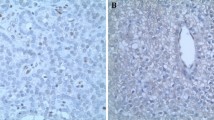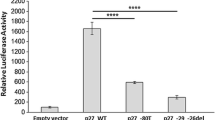Abstract
Objective: Primary hyperparathyroidism (PHPT), a common endocrine condition, is usually caused by sporadically occurring parathyroid adenoma. A subset of patients carry germline mutations in genes such as MEN1 (multiple endocrine neoplasia type 1), HRPT2 (hyperparathyroidism 2), and CASR (calcium-sensing receptor) predisposing to syndromic forms of PHPT or familial isolated hyperparathyroidism (FIHP). Recently, germline mutations in two novel genes AIP (aryl hydrocarbon receptor-interacting protein) and CDKN1B (cyclin-dependent kinase inhibitor 1B) have been found to be associated with endocrine tumors. The purpose of this study was to evaluate the role of MEN1, HRPT2, CASR, AIP, and CDKN1B genes in PHPT patients with clinical features suggestive of genetic predisposition. Patients and design: Medical records of patients treated for PHPT from 1974 to 2001 at Oulu University Hospital were reviewed. Patients with multiglandular or recurrent/persistent disease, other MEN1-related manifestations, aged 40 yr or younger at onset or with a family history of PHPT/MEN1-related tumor were invited to the study. Twenty patients with previously diagnosed MEN1 were excluded. Participants were interviewed and blood samples obtained for biochemical screening and mutation analysis of MEN1, HRPT2, CASR, AIP, and CDKN1B. Results: Of the 56 invited patients, 29 took part in the study. One patient was found to carry the c. 1356_1367del12 MEN1 founder mutation. Mutations in other genes were not detected. Conclusions: Apart from MEN1, mutations in other genes predisposing to PHPT seem to be rare or non-existing in Northern Finnish PHPT patients. No evidence was found for a role of AIP or CDKN1B in PHPT predisposition.
Similar content being viewed by others
References
Bilezikian JP, Potts JT Jr, Fuleihan G, et al. Summary statement from a workshop on asymptomatic primary hyperparathyroidism: a perspective for the 21st century. J Clin Endocrinol Metab 2002, 87: 5353–61.
Villablanca A, Wassif WS, Smith T, et al. Involvement of the MEN1 gene locus in familial isolated hyperparathyroidism. Eur J Endocrinol 2002, 147: 313–22.
Simonds WF, James-Newton LA, Agarwal SK, et al. Familial isolated hyperparathyroidism: clinical and genetic characteristics of 36 kindreds. Medicine (Baltimore) 2002, 81: 1–26.
Warner JV, Nyholt DR, Busfield F, et al. Familial isolated hyperparathyroidism is linked to a 1.7 Mb region on chromosome 2p13.3–14. J Med Genet 2006, 43: e12.
Chandrasekharappa SC, Guru SC, Manickam P, et al. Positional cloning of the gene for multiple endocrine neoplasia-type 1. Science 1997, 276: 404–7.
Mulligan LM, Kwok JB, Healey CS, et al. Germ-line mutations of the RET proto-oncogene in multiple endocrine neoplasia type 2A. Nature 1993, 363: 458–60.
Carpten JD, Robbins CM, Villablanca A, et al. HRPT2, encoding parafibromin, is mutated in hyperparathyroidism-jaw tumor syndrome. Nat Genet 2002, 32: 676–80.
Pollak MR, Brown EM, Chou YH, et al. Mutations in the human Ca(2+)-sensing receptor gene cause familial hypocalciuric hypercalcemia and neonatal severe hyperparathyroidism. Cell 1993, 75: 1297–303.
Bai M, Janicic N, Trivedi S, et al. Markedly reduced activity of mutant calcium-sensing receptor with an inserted Alu element from a kindred with familial hypocalciuric hypercalcemia and neonatal severe hyperparathyroidism. J Clin Invest 1997, 99: 1917–25.
Warner J, Epstein M, Sweet A, et al. Genetic testing in familial isolated hyperparathyroidism: unexpected results and their implications. J Med Genet 2004, 41: 155–60.
Kassem M, Kruse TA, Wong FK, Larsson C, Teh BT. Familial isolated hyperparathyroidism as a variant of multiple endocrine neoplasia type 1 in a large Danish pedigree. J Clin Endocrinol Metab 2000, 85: 165–7.
Teh BT, Esapa CT, Houlston R, et al. A family with isolated hyperparathyroidism segregating a missense MEN1 mutation and showing loss of the wild-type alleles in the parathyroid tumors. Am J Hum Genet 1998, 63: 1544–9.
Simonds WF, Robbins CM, Agarwal SK, Hendy GN, Carpten JD, Marx SJ. Familial isolated hyperparathyroidism is rarely caused by germline mutation in HRPT2, the gene for the hyperparathyroidism-jaw tumor syndrome. J Clin Endocrinol Metab 2004, 89: 96–102.
Villablanca A, Calender A, Forsberg L, et al. Germline and de novo mutations in the HRPT2 tumour suppressor gene in familial isolated hyperparathyroidism (FIHP). J Med Genet 2004, 41: e32.
Cetani F, Pardi E, Ambrogini E, et al. Genetic analyses in familial isolated hyperparathyroidism: implication for clinical assessment and surgical management. Clin Endocrinol (Oxf) 2006, 64: 146–52.
Brandi ML, Gagel RF, Angeli A, et al. Guidelines for diagnosis and therapy of MEN type 1 and type 2. J Clin Endocrinol Metab 2001, 86: 5658–71.
Teh BT, Farnebo F, Kristoffersson U, et al. Autosomal dominant primary hyperparathyroidism and jaw tumor syndrome associated with renal hamartomasand cystic kidney disease: linkage to 1q21–q32 and loss of the wild type allele in renal hamartomas. J Clin Endocrinol Metab 1996, 81: 4204–11.
Carling T, Szabo E, Bai M, et al. Familial hypercalcemia and hypercalciuria caused by a novel mutation in the cytoplasmic tail of the calcium receptor. J Clin Endocrinol Metab 2000, 85: 2042–7.
Pellegata NS, Quintanilla-Martinez L, Siggelkow H, et al. Germ-line mutations in p27Kip1 cause a multiple endocrine neoplasia syndrome in rats and humans. Proc Natl Acad Sci U S A 2006, 103: 15558–63.
Georgitsi M, Raitila A, Karhu A, et al. Germline CDKN1 B/p27Kip1 mutation in multiple endocrine neoplasia. J Clin Endocrinol Metab 2007, 92: 3321–5.
Vierimaa O, Georgitsi M, Lehtonen R, et al. Pituitary adenoma predisposition caused by germline mutations in the AIP gene. Science 2006, 312: 1228–30.
Georgitsi M, Karhu A, Winqvist R, et al. Mutation analysis of aryl hydrocarbon receptor interacting protein (AIP) gene in colorectal, breast, and prostate cancers. Br J Cancer 2007, 96: 352–6.
Raitila A, Georgitsi M, Karhu A, et al. No evidence of somatic aryl hydrocarbon receptor interacting protein mutations in sporadic endocrine neoplasia. Endocr Relat Cancer 2007, 14: 901–6.
Kytölä S, Villablanca A, Ebeling T, et al. Founder effect in multiple endocrine neoplasia type 1 (MEN 1) in Finland. J Med Genet 2001, 38: 185–9.
Ebeling T, Vierimaa O, Kytola S, Leisti J, Salmela PI. Effect of multiple endocrine neoplasia type 1 (MEN1) gene mutations on premature mortality in familial MEN1 syndrome with founder mutations. J Clin Endocrinol Metab 2004, 89: 3392–6.
Öberg K, Skogseid B. The ultimate biochemical diagnosis of endocrine pancreatic tumours in MEN-1. J Intern Med 1998, 243: 471–6.
Dackiw AP, Cote GJ, Fleming JB, et al. Screening for MEN1 mutations in patients with atypical endocrine neoplasia. Surgery 1999, 126: 1097–104.
Marx SJ. Multiple endocrine neoplasia type 1. In: Scriver CS, Beaudet AL, Sly WS, Valle D eds. The Metabolic and Molecular Bases of Inherited Disease. 8th ed. New York: McGraw-Hill. 2001, 943–65.
Heppner C, Kester MB, Agarwal SK, et al. Somatic mutation of the MEN1 gene in parathyroid tumours. Nat Genet 1997, 16: 375–8.
Carling T, Correa P, Hessman O, et al. Parathyroid MEN1 gene mutations in relation to clinical characteristics of nonfamilial primary hyperparathyroidism. J Clin Endocrinol Metab 1998, 83: 2960–3.
Farnebo F, Teh BT, Kytölä S, et al. Alterations of the MEN1 gene in sporadic parathyroid tumors. J Clin Endocrinol Metab 1998, 83: 2627–30.
Uchino S, Noguchi S, Sato M, et al. Screening of the Men1 gene and discovery of germ-line and somatic mutations in apparently sporadic parathyroid tumors. Cancer Res 2000, 60: 5553–7.
Cupisti K, Höppner W, Dotzenrath C, et al. Lack of MEN1 gene mutations in 27 sporadic insulinomas. Eur J Clin Invest 2000, 30: 325–9.
Roijers JF, de Wit MJ, van der Luijt RB, Ploos van Amstel HK, Höppener JW, Lips CJ. Criteria for mutation analysis in MEN 1-suspected patients: MEN 1 case-finding. Eur J Clin Invest 2000, 30: 487–92.
Langer P, Wild A, Hall A, Celik I, Rothmund M, Bartsch DK. Prevalence of multiple endocrine neoplasia type 1 in young patients with apparently sporadic primary hyperparathyroidism or pancreaticoduodenal endocrine tumours. Br J Surg 2003, 90: 1599–603.
Cardinal JW, Bergman L, Hayward N, et al. A report of a national mutation testing service for the MEN1 gene: clinical presentations and implications for mutation testing. J Med Genet 2005, 42: 69–74.
Ellard S, Hattersley AT, Brewer CM, Vaidya B. Detection of an MEN1 gene mutation depends on clinical features and supports current referral criteria for diagnostic molecular genetic testing. Clin Endocrinol (Oxf) 2005, 62: 169–75.
Tham E, Grandell U, Lindgren E, Toss G, Skogseid B, Nordenskjöld M. Clinical testing for mutations in the MEN1 gene in Sweden: a report on 200 unrelated cases. J Clin Endocrinol Metab 2007, 92: 3389–95.
Howell VM, Haven CJ, Kahnoski K, et al. HRPT2 mutations are associated with malignancy in sporadic parathyroid tumours. J Med Genet 2003, 40: 657–63.
Cetani F, Pardi E, Borsari S, et al. Genetic analyses of the HRPT2 gene in primary hyperparathyroidism: germline and somatic mutations in familial and sporadic parathyroid tumors. J Clin Endocrinol Metab 2004, 89: 5583–91.
Shattuck TM, Välimäki S, Obara T, et al. Somatic and germ-line mutations of the HRPT2 gene in sporadic parathyroid carcinoma. N Engl J Med 2003, 349: 1722–9.
Ozawa A, Agarwal SK, Mateo CM, et al. The parathyroid/pituitary variant of multiple endocrine neoplasia type 1 usually has causes other than p27Kip1 mutations. J Clin Endocrinol Metab 2007, 92: 1948–51.
Author information
Authors and Affiliations
Corresponding author
Rights and permissions
About this article
Cite this article
Vierimaa, O., Villablanca, A., Alimov, A. et al. Mutation analysis of MEN1, HRPT2, CASR, CDKN1B, and AIP genes in primary hyperparathyroidism patients with features of genetic predisposition. J Endocrinol Invest 32, 512–518 (2009). https://doi.org/10.1007/BF03346498
Accepted:
Published:
Issue Date:
DOI: https://doi.org/10.1007/BF03346498




